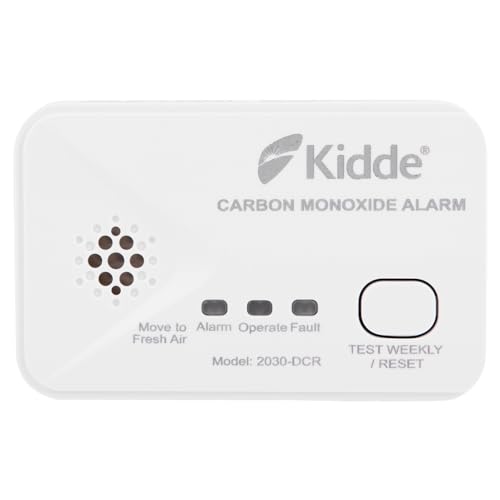Understanding CO2 Detectors: What They Are and Why We Need Them
What is a CO2 Detector?
A CO2 detector is a device designed to monitor the levels of carbon dioxide (CO2) in the air. It’s important because elevated levels of CO2 can indicate poor ventilation and can be harmful to health. In areas like homes, offices, and schools, ensuring that CO2 levels are kept in check is essential for maintaining good air quality.
Why are CO2 Detectors Important?
We need CO2 detectors because they play a vital role in our health and wellbeing. High concentrations of CO2 can lead to symptoms such as headaches, dizziness, and fatigue. In extreme cases, it can compromise cognitive function and overall safety. Installing a CO2 detector helps to ensure we are breathing safe, fresh air, especially in enclosed spaces where proper ventilation might be lacking.
Key Features to Look for in a CO2 Detector
Sensor Type and Accuracy
When choosing a CO2 detector, we should pay close attention to the type of sensor it uses. Non-dispersive infrared (NDIR) sensors are recommended due to their accuracy and reliability in measuring CO2 levels over time, which is crucial for ensuring effective monitoring.
Display and Alerts
Look for a model with a clear display that shows real-time CO2 levels, typically measured in parts per million (ppm). Additionally, detectors that provide audible alarms or visual alerts when levels rise above recommended limits are essential to ensure we are immediately aware of any issues.
Power Source and Battery Life
Consider whether the detector runs on batteries or needs to be plugged in. Battery-operated models offer flexibility in placement, but we should also check the estimated battery life to avoid frequent replacements or outages.
How to Choose the Right CO2 Detector for Your Home or Office
Assessing Your Space
Before making a purchase, we need to assess the size of the area where the detector will be used. Larger spaces may require multiple units to ensure comprehensive monitoring, especially in spaces like classrooms or large meeting rooms.
Feature Prioritisation
Think about which features are most important for your needs. For example, if you prefer real-time monitoring, prioritise detectors with advanced digital displays. Conversely, if ease of installation is more important, look for models designed for simple setup.
Reading Reviews and Comparisons
Reading reviews from other users can be exceptionally valuable. We recommend analysing feedback on performance, ease of use, and reliability. This can help us identify which models have consistently positive experiences from other consumers.
Top CO2 Detector Models Compared: Which One Is Right for You?
Model Overview
While our guide shouldn’t dwell on specific models, it’s helpful to consider various products that cater to different needs. For instance, there are compact models perfect for small rooms and more comprehensive systems designed for industrial usage.
Price Range Considerations
Prices for CO2 detectors can vary significantly, depending on features and specifications. We should establish a budget that aligns with our needs, ensuring that essential features are not sacrificed for lower costs.
Evaluating User Experiences
Comparing user experiences across different models can guide our choice effectively. Models with consistent praise for accuracy, durability, and customer service enhancements are often good picks.
Best Practices for Installing and Maintaining Your CO2 Detector
Optimal Installation Locations
For effective monitoring, we should install CO2 detectors in areas where people spend significant time, such as near sleeping areas and common rooms. Avoid placing them too close to windows or vents, as external airflow can affect accuracy.
Regular Maintenance Checks
To ensure reliable functionality, regular maintenance checks are imperative. We recommend testing the unit monthly and replacing batteries as needed, ideally when the time changes or seasonally to maintain good practice.
Understanding Manufacturer Guidelines
We must familiarize ourselves with the manufacturer’s instructions regarding lifespan and maintenance. Some models may require professional servicing after a certain period, while others can be maintained independently.



















